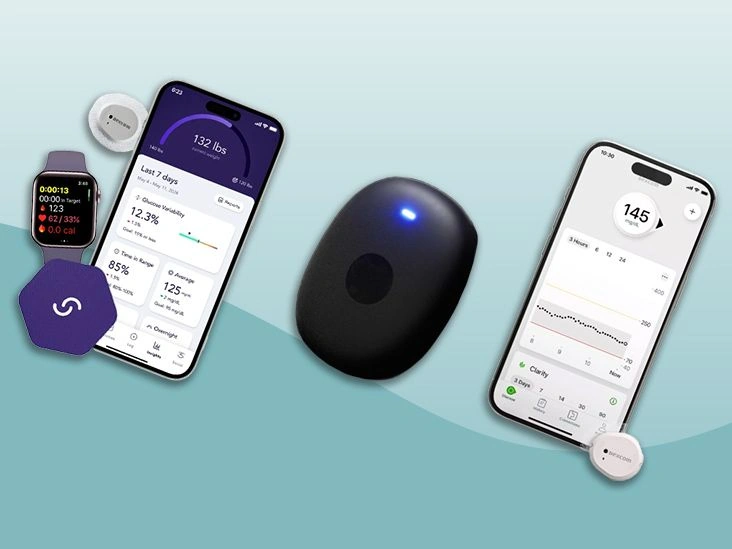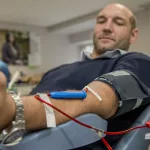A quick look at the best meters and continuous glucose monitors
- Best overall for new users: | Skip to review
- Best for nutritionist support: | Skip to review
- Best for personalized advice: | Skip to review
- Best for in-depth insights: | Skip to review
- Best for blood-free readings: | Skip to review
- Longest lasting CGM sensor: | Skip to review
Home glucose meters can reduce your likelihood of diabetes-related complications. Alongside your treatment plan, using a home monitor helps you spot factors that make your blood sugar rise or fall — from physical activity to illness, stress to dehydration, and more.
The recommends testing your blood sugar as instructed by your healthcare provider. How frequently you should check depends on several factors, including:
- the type of diabetes you have
- which medications you’re taking
- how many meals you eat per day
Some clinicians may advise testing only a few times daily, while others might suggest continuous monitoring — each person’s needs are different and can evolve over time.
With so many choices on the market, picking a reliable glucose monitor can be overwhelming. To simplify the decision, we compiled seven of the top glucose monitors available. Discuss these options with your doctor before purchasing.

Comparing glucose meters
Glucose metersPriceTypeInsurance accepted$21.99BGMno$225-320app compatible with most CGMsnodepends on planCGM with app accessnofirst month is $398 plus taxapp compatible with most CGMsnodepends on coverageCGM with app accessyesfrom $199 a year, depending on insurance coverageCGM with app accessyesHow we chose continuous glucose monitors
Primarily, we selected continuous glucose monitors that report the highest accuracy. Because home meters are meant to help you track glucose between lab visits with your provider, it’s crucial that your device delivers as precise results as possible.
Although no home test matches the precision of a lab assay, getting close to lab-quality results can improve your confidence and support better diabetes control.
Other criteria we evaluated include:
- Price and affordability: Meters and their supplies vary widely in cost. The items on this list are either budget-friendly out of pocket or obtainable through insurance.
- Insurance coverage: It’s wise to verify with your insurer which home glucose monitors are partially or fully covered by your plan.
- Accessibility: Devices here provide audible or tactile alerts when needed and include other accessibility options rather than being solely visual displays.
- Durability: The meter you pick should be built to last and operate dependably after repeated use.
- Portability: Most meters featured come with carrying cases or are otherwise easy to transport so they can accompany you wherever you go.
- Special features: Whether you want Bluetooth connectivity or subtle vibration alerts, these selections offer a range of useful extras.
- Overall ease of use: Checking your blood sugar should be straightforward, even for beginners. We prioritized devices that are simple and intuitive.
- User experiences and reviews: We also considered feedback — both positive and negative — from real users who rely on these devices in daily life.
We included glucose monitors spanning different features and price points. The cost of continuous glucose monitors (CGMs) and blood glucose meters can differ substantially depending on functionality, insurance coverage, and location. Prices may also change over time based on your insurance, so confirm details with your carrier for the most current pricing.
What to look for in a glucose monitor
If you’ve used a conventional glucose meter before and want a less painful, more mobile option, a CGM could be a better fit. Consider products such as the Libre, Dexcom G7, or Eversense for their features, accuracy, and sensor wear duration.
Although most insurance plans and Medicare cover CGMs, these devices tend to be costlier overall. Depending on your coverage, your insurer may approve one CGM type but not another. Be sure to verify coverage details with your insurance provider in advance.
If you lack insurance, ask your physician or pharmacist about discounts for CGMs and supplies. Manufacturers may also offer coupons to help reduce out-of-pocket expenses.
Notes for buying online
When shopping for glucose monitors online, you’ll find that some items, like the BGM Contour Next, are sold over the counter, while CGMs such as the FreeStyle Libre 3 or Dexcom G7 require a prescription.
This is because obtaining a CGM system requires a doctor’s prescription. Basic fingerstick meters included on our list don’t need prescriptions. With a prescription, you can often purchase a CGM from an online medical supplier.
If you decide to buy a glucose meter or monitor online, be sure you understand the total expense up front, including test strips, extra sensors, lancets, and accessories that may be sold separately. You might also set up automatic refills to avoid running out.
Frequently asked questions about glucose monitors
Do you need a prescription for a glucose meter?
You don’t need a prescription for a blood glucose meter. However, a continuous glucose monitor does require one.
Can a smartwatch monitor blood sugar?
Certain smartwatches can pair with CGM systems so you can view readings on your watch. However, no smartwatch can directly measure blood glucose on its own.
What is a normal blood sugar range?
A fasting blood sugar result of 99 mg/dL or lower is considered normal. For a glucose tolerance test, a reading of 140 mg/dL is viewed as normal.
The bottom line
The best glucose meter for you ultimately depends on:
- which features matter most to you
- whether you prefer a traditional meter or a CGM
- your budget
These seven glucose monitors present advantages — and some drawbacks — to weigh as you make your decision. Discuss these options with your healthcare provider to determine the best fit.


















Leave a Reply
You must be logged in to post a comment.